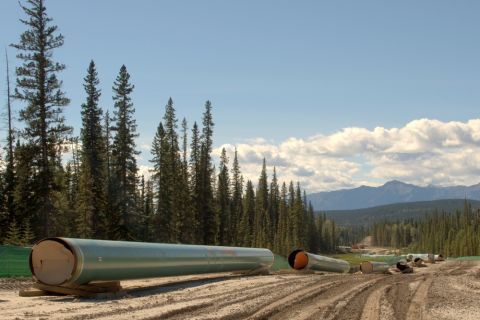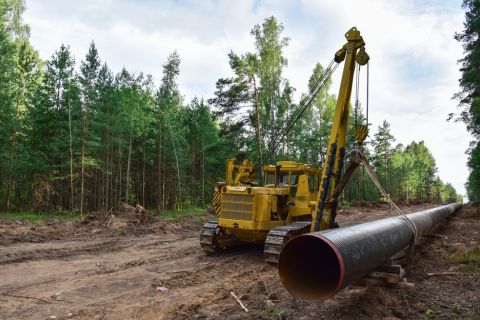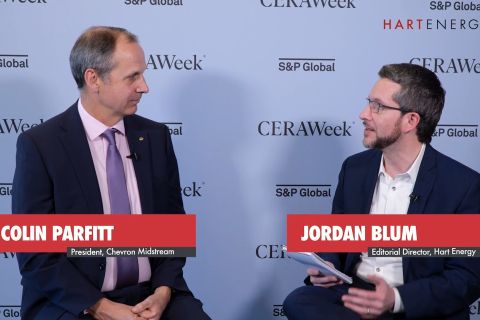Rock physics relationships are the essential element in the evaluation and modeling of seismic attributes for hydrocarbon exploration and appraisal. Calibration of seismic amplitude responses requires accurate prediction of the expected acoustic properties for reservoir rocks, non-reservoir lithologies (e.g., mudrocks), and pore fluids at varying conditions. The estimation of seismic amplitude variation with offset, extraction of reservoir properties from seismic, and time-lapse response all are similarly dependent on reliable rock and fluid property information. Recent experience in a number of global basins has demonstrated the value of an integrated approach to developing rock and fluid acoustic properties for the quantitative interpretation of seismic data.
Rock physics templates (RPTs) have been developed for use as both a calibration method and a visual, multiscale integration platform. RPTs create dynamic graphical overlays of one or more rock physics models, including the effect of variations in model constraints and reservoir properties such as porosity and water saturation. Access to model parameters and key reservoir property variables enables the creation of dynamic templates that highlight anticipated seismic attribute response. The templates can be used to interactively calibrate key model parameters and to covisualize data from a variety of sources using user-selected reservoir, rock physics, or seismic properties. The RPT is rendered directly in the required cross-plot space without further user intervention or manipulation of the underlying model(s).
RPTs reduce some complexity and detail of rock physics modeling by bringing calibrated model templates to the larger geoscience and interpretation community.
Rock physics model development
Rock physics has long relied on models based on a variety of measurements to describe the density and elastic property behavior of both rocks and fluids. While a variety of rock physics models are available, model calibration is required in all instances. Additional insight into model behavior and predictive capability is achieved when both core- and well-derived data are deliberately integrated during model development. The accuracy afforded by lab measurements ensures robust model calibration.

FIGURE 1. Data are upscaled well events (open circles) and published core plug measurements on sandstone (solid squares). Common heuristic models include friable sand (black); constant cement (blue), including varied cement volume (dashed blue); and the friable shale (dot-dash) for varying quartz fractions. (Images courtesy of Ikon Science)
An example of rock physics model calibration comes from a vertical well drilled in the deepwater Gulf of Mexico (GoM). The well has a full suite of well log data and measured formation pressure data. In this sand-shale environment, a suite of heuristic models was applied that is commonly used for clastic sediments – unconsolidated sand, sandstone, and mudrocks. The models yield dry bulk and shear modulus as a function of porosity (and other input parameters), so it is appropriate to use modulus-porosity as one of the calibration spaces (Figure 1). Relevant model parameters include effective pressure, rock parameters, fluid properties, and grain properties. Using locally measured or inferred properties provides very effective calibration of both a mudrock model and a sandstone model. Analog core data are seen to be in excellent agreement with the model and local well data, supporting the interpretation of consolidated sandstone in this well.
Reservoir petrophysics plays a vital role in bringing core-calibrated reservoir properties input to the rock physics modeling process. The petrophysicist must deliver quality-controlled (QCd) well log data and an integrated interpretation of reservoir properties and non-reservoir lithologies. The rock physics specialist is responsible for applying appropriate model parameters, tuned to local geology and pressure-temperature regime and local acoustic properties. Petrophysicists also are a key enabler in this effort to translate and upscale elastic properties for seismic-based reservoir characterization.
Reservoir properties from seismic inversion
Challenges with multiscale data integration and translation between rock physics models and seismic attributes also are significant. The challenges of scale and translation have implications for those seeking to extract reservoir-scale properties from seismic data, particularly using inversion techniques. While the rock physics calibration is frequently accomplished in modulus-porosity variables, the petrophysicist tends to work and think in velocity/porosity space. The quantitative interpretation geophysicist is inclined to interpret using variables that more naturally align with the seismic experiment and inversion products.

FIGURE 2. Data and models are the same as in Figure 1. The additional model is the modified upper Hashin-Shtrikman bound (red), and additional analog well data are from a North Sea cemented sandstone reservoir (solid circles).
Figure 2 shows the same GoM well data and calibrated models but now in velocity vs. porosity space. The additional rock physics model serves as a useful constraint and QC on the local well data, while the analog data from another geologically sensible cemented sandstone further reinforces the local well interpretation and choice of rock physics model. In this interpretation space, the calibrated rock physics models facilitate well data QC and the beginning of quantitative interpretation and integration between team members in petrophysics and geophysics.
The ultimate aim of seismic-based reservoir characterization is to infer reservoir properties from one or more inversion volumes and map those properties in 3-D. RPTs optimize the integration, calibration, and communication required between data types and within the asset team.

FIGURE 3. The velocity ratio is plotted against the compressional (P-wave) acoustic impedance. Data and models are the same as in Figure 2. Additional data are GoM well-based mudrock event data. The effect of fluid substitution on the constant cement model is shown for a gas case (red dashed lines) at 0.15 (residual) and 0.85 (commercial) gas saturation.
Figure 3 shows the GoM well data and calibrated rock physics models rendered in a space suitable to the interpretation of common products from an elastic impedance inversion. Such a set of calibrated models, deployed as a rock physics template, can be used to classify or infer reservoir properties using products commonly delivered from seismic inversion volumes. It is interesting to note the variance between data and models as one moves from the original model calibration (Figure 1) to the interpretation space where key reservoir parameters may be inferred from the inversion products (Figure 3). This serves as yet another useful reminder about the need for integration and the impact of varying scales and spatial resolution inherent in the interpretation of reservoir properties from non-unique seismic inversion products.
RPTs enable the efficient integration of multiscale data in a co-rendered visualization space that promotes QC and geologically sound interpretation. This complex process can be simplified by bringing calibrated model templates to the larger geoscience and interpretation community, where the emphasis can be placed on efficient creation of geologically meaningful reservoir property volumes from a variety of seismic data sources.
Recommended Reading
Imperial Expects TMX to Tighten Differentials, Raise Heavy Crude Prices
2024-02-06 - Imperial Oil expects the completion of the Trans Mountain Pipeline expansion to tighten WCS and WTI light and heavy oil differentials and boost its access to more lucrative markets in 2024.
Trans Mountain Pipeline Announces Delay for Technical Issues
2024-01-29 - The Canadian company says it is still working for a last listed in-service date by the end of 2Q 2024.
Carlson: $17B Chesapeake, Southwestern Merger Leaves Midstream Hanging
2024-02-09 - East Daley Analytics expects the $17 billion Chesapeake and Southwestern merger to shift the risk and reward outlook for several midstream services providers.
Exclusive: Renewables Won't Promise Affordable Security without NatGas
2024-03-25 - Greg Ebel, president and CEO of midstream company Enbridge, says renewables needs backing from natural gas to create a "nice foundation" for affordable and sustainable industrial growth, in this Hart Energy Exclusive interview.
Exclusive: Chevron Balancing Low Carbon Intensity, Global Oil, Gas Needs
2024-03-28 - Colin Parfitt, president of midstream at Chevron, discusses how the company continues to grow its traditional oil and gas business while focusing on growing its new energies production, in this Hart Energy Exclusive interview.





